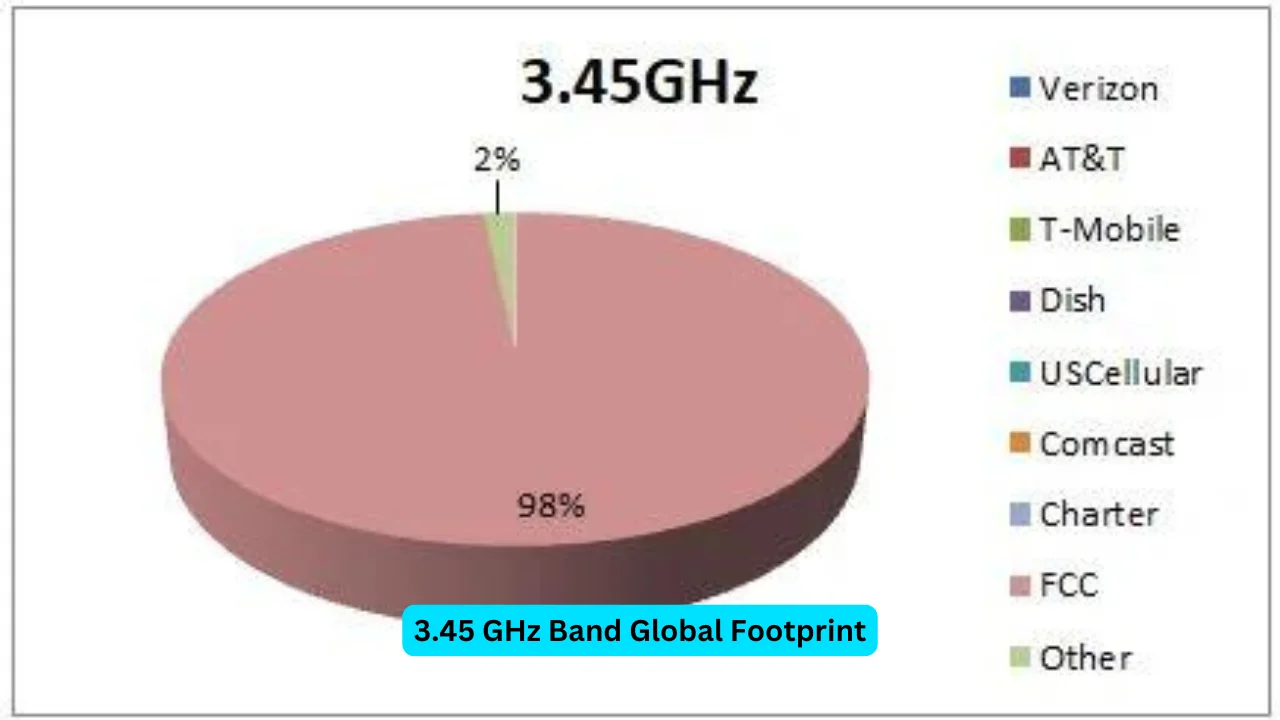In today’s digital age, the 3.45 GHz band has emerged as a critical element in global wireless communication. With the rapid expansion of 5G networks, this mid-band spectrum has gained immense importance. As we explore the “3.45 GHz band global footprint,” it’s crucial to remember how this specific band has been instrumental in improving internet speed, reducing latency, and supporting the growing demand for wireless data. Let’s dive deeper into the significance, uses, and impact of the 3.45 GHz spectrum on a global scale.
Why the 3.45 GHz Band Matters in Modern Communication
The 3.45 GHz band is a part of the mid-band spectrum, offering an ideal balance between coverage and capacity. This spectrum is highly valued because it provides a perfect balance between the extensive coverage of low-band frequencies and the high capacity of millimeter-wave (mmWave) frequencies. With its ability to support both rural and urban deployments, it ensures seamless connectivity and plays a pivotal role in the development of 5G networks.
Global Importance of the 3.45 GHz Band
Globally, the 3.45 GHz band has been recognized as a key enabler of next-generation communication technologies. Governments and telecommunication authorities around the world, including the Federal Communications Commission (FCC) in the United States, have auctioned this spectrum to enhance the capacity and reach of 5G services. The global adoption of this band ensures that a wide range of devices, from smartphones to smart cities, can benefit from high-speed connectivity.
For example, countries like the United States, China, Japan, and South Korea have integrated the 3.45 GHz band into their national spectrum allocation strategies. In Europe, the band is seen as crucial for the continent’s digital future, supporting goals for ubiquitous 5G coverage.
How the 3.45 GHz Band Supports 5G Deployment
The 3.45 GHz band is often termed a “sweet spot” for 5G deployment due to its ability to deliver both extensive coverage and impressive capacity. Unlike low-band frequencies that provide broader coverage with less data throughput, or high-band frequencies that offer higher speeds but over shorter distances, the 3.45 GHz band provides an optimal middle ground.
- Enhanced Internet Speeds: The 3.45 GHz spectrum enables faster internet speeds by allowing more data to be transmitted over wireless networks. This is particularly beneficial for applications such as HD video streaming, online gaming, and real-time communication.
- Lower Latency: Lower latency is a game-changer for many industries, including healthcare, automotive, and finance. The 3.45 GHz band contributes to reducing the delay between sending and receiving information, which is essential for applications like remote surgeries and autonomous vehicles.
- Greater Network Capacity: With the growing number of connected devices, network congestion has become a significant challenge. The 3.45 GHz band helps alleviate this by providing additional capacity, ensuring that all devices remain connected and function optimally.
Challenges in Deploying the 3.45 GHz Band
While the benefits are substantial, deploying the 3.45 GHz band is not without its challenges. Many regions still face hurdles due to regulatory issues and the need for significant infrastructure investments. For instance, the deployment of 5G networks using the 3.45 GHz band requires upgrading existing cell towers and, in many cases, building new infrastructure.
In addition, there is the challenge of interference. Given that the 3.45 GHz spectrum is adjacent to other frequency bands used by various services, there is a risk of interference, which can affect the quality of service. Proper spectrum management and technological solutions are essential to mitigate these issues.
Global Strategies for Expanding the 3.45 GHz Band
To address these challenges, governments and telecom providers worldwide are developing strategic approaches to maximize the potential of the 3.45 GHz band. Here are some notable examples:
- United States: The FCC has been proactive in auctioning off the 3.45 GHz band to various telecommunication companies, paving the way for widespread 5G deployment. With a focus on collaboration between federal agencies and private entities, the U.S. aims to create a seamless 5G network that benefits businesses and consumers alike.
- Europe: European countries have recognized the 3.45 GHz spectrum as an essential asset for achieving the EU’s goal of complete 5G coverage by 2025. Multiple countries are working together to ensure a coordinated release of this spectrum across the continent, supporting the creation of a single digital market.
- Asia-Pacific: In the Asia-Pacific region, countries like Japan and South Korea have aggressively pursued the rollout of 5G using the 3.45 GHz band. Their approach includes substantial government investment, public-private partnerships, and international cooperation to minimize interference issues and ensure smooth deployment.
The Future Outlook: Expanding Footprint of the 3.45 GHz Band
As we move towards a more connected world, the importance of the 3.45 GHz band will only increase. With ongoing innovations in network technology, the global footprint of the 3.45 GHz band is expected to expand even further. New applications, such as virtual reality, augmented reality, and the Internet of Things (IoT), will benefit immensely from the enhanced connectivity provided by this spectrum.
Moreover, as spectrum-sharing technologies improve, we might see more efficient use of the 3.45 GHz band, maximizing its capacity and coverage potential. This could lead to even faster deployment of 5G networks worldwide, bridging the digital divide between urban and rural areas.
Conclusion:
In conclusion, the 3.45 GHz band plays a vital role in shaping the future of wireless communication. Its ability to offer a balance between coverage and capacity makes it a preferred choice for 5G networks worldwide. While challenges remain, the ongoing efforts by global stakeholders to overcome these obstacles are promising.
As we continue to explore the potential of the 3.45 GHz spectrum, it becomes clear that this band will be an essential part of our digital future, driving innovation and enabling a more connected world.
